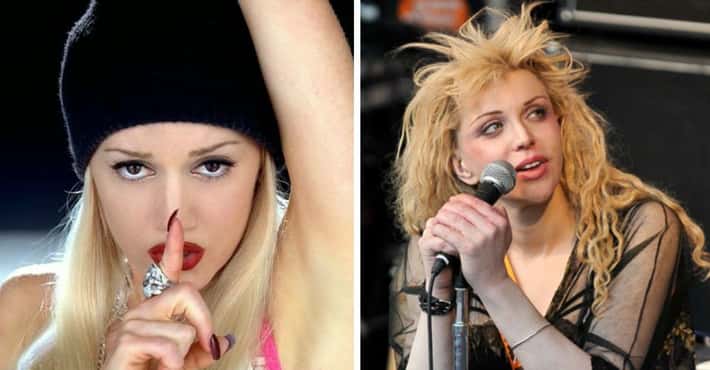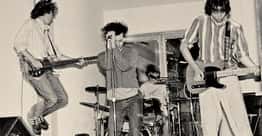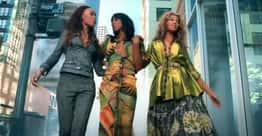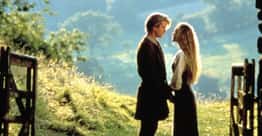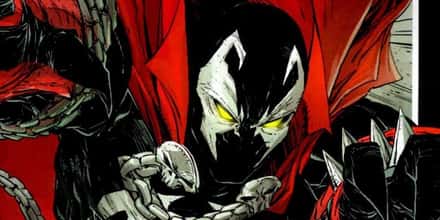
The Amazing History Of The Macarena, The Song That Dominated The '90s
Copy link
- Video: YouTube

The Origin
Antonia Romero and Rafael Ruiz started performing together in Spain as Los del Rio in 1966. There was no reason to assume the group would ever extend their cultural reach beyond the popular music of their native country. At the time, they were mostly known for flamenco and lounge music, and bummed around Madrid playing club gigs.
But everything changed for Romero and Ruiz during a chance meeting with the Venezuelan businessman Gustavo Cisneros. According to an interview with Spanish Vanity Fair in 2015, the two men saw a flamenco dancer by the name of Diana Patricia Cubillán. Her moves so impressed Romero and Ruiz that, on the spot, they set about writing the lyrics to the song that would become their biggest hit.
In classic one-hit wonder fashion, they say the writing took a grand total of about five minutes. For the purposes of the song, they named the protagonist "Macarena," after Romero's daughter, Esperanza Macarena. It may come as a shock to those who danced to the song at weddings and cruises to discover the lyrics tell the tale of a promiscuous woman named Macarena who is unfaithful to her husband while he's away in the army.
It all could have ended here, with a catchy, if unmemorable Spanish flamenco record. But thanks to a series of fortuitous events and near-misses, "Macarena" would become one of the biggest songs in history.
- Photo: BMG/RCA/Zafiro S.A / Wikimedia Commons / Public Domain
The Remix
The original flamenco version of "Macarena" was a huge domestic hit in Spain in the early 1990s. That led the record company to request a more mainstream dance remix with English-language lyrics. This is where the history of "Macarena" gets hazy.
A Spanish dance duo named Fangoria claimed for years that they were owed money for work done to arrange and remix the song back in the '90s, but Los del Rio deny those claims. The conflict went as far as court proceedings in Spain, but a Fangoria version of "Macarena" didn't end up becoming the crossover smash we all remember.
Today, "Macarena" has been remixed countless times and in multiple languages, but the remix that caught on was produced by Mike Triay and Carlos de Yarza, who were known as the "Bayside Boys."
As legend has it, Triay and de Yarza were asked by radio DJ Jammin’ John Caride of Miami's Power 96 FM to create a version of the song with English lyrics that could appeal to American audiences. Caride was fielding numerous requests from listeners for "Macarena," but was forbidden from playing anything on his radio station that was exclusively in a language other than English. The song's new verses would be in English, but retain the Spanish chorus as sung by Romero and Ruiz.
This new version slowly started catching on with listeners in heavily Latinx areas like South Florida, but there was still one piece missing from the puzzle that would change the course of Los del Rio's career forever.
- Video: YouTube
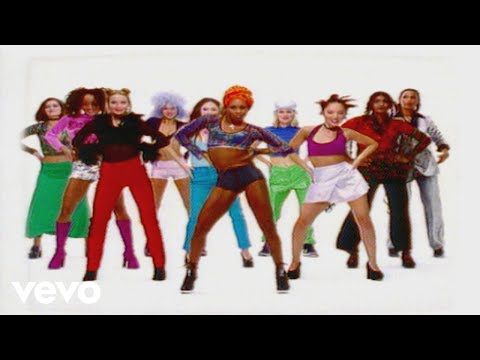
The Music Video
The music video for "Macarena (Bayside Boys Remix)" dropped in July 1996, launching the song into the American popular consciousness. One month later, the song had shot up to No. 1 on the Billboard charts, a spot it would not give up until the fall of that year.
In an era with elaborate, expensive, high-concept music videos from superstar artists like Michael Jackson, the video for "Macarena (Bayside Boys Remix)" was self-consciously low-tech. It's nothing more than a parade of women lip-syncing the song in front of a white backdrop. When the Spanish chorus kicks in, Romero and Ruiz pop up in three-piece suits and the widest grins you've ever seen.
The director, Frenchman Vincent Calvet, told the Huffington Post that he had to fight the record label, EMI, for the minimalist style he wanted for the video. "I thought the music video could provide somewhat of a dance lesson," he said. "I proposed this simple concept, with the artists singing and surrounded by beautiful dancers from around the world."
The choreographer for the video, Mia Frye, explained the origin of the dance to HuffPo in 2016:
I knew it had to be crystal-clear, and that it was very important that people could relate [to the dance]. Meaning: If a child, an old person, a king, a [peasant], or a president saw my "Macarena" dance only one time, [they] would remember the moves, soul, joy, and happiness spilling out of the video!
The video for "Macarena (Bayside Boys Remix)" became an MTV staple in 1996, spawning a variety of parodies like this one from the Kids' WB Saturday morning cartoon Animaniacs or the infamous scene of Dr. Evil trying and failing to appeal to his angsty son, Scott, in Austin Powers: International Man of Mystery.
Out of nowhere, Los del Rio went from modest Spanish clubs to selling out arenas and meeting Pope John Paul II.
- Video: YouTube

The Phenomenon (And The Backlash)
For 14 weeks, "Macarena (Bayside Boys Remix)" remained at No. 1, staying on the charts for a whopping 66 weeks.
The song and dance were impossible to escape. The New York Yankees set a record for the largest mass performance of the Macarena dance, with 50,000 people swiveling their hips in unison on August 16, 1996. The Macarena even wormed its way into that year's presidential election, as the Democratic National Convention that took place that summer was interrupted so participants could perform the dance live on C-SPAN.
By that point, the Macarena's place in pop culture was already starting to wear thin. Come autumn, the song was public enemy No. 1. When a song like that is everywhere, annoyance is bound to set in. A September 1996 column in the Orlando Sentinel, not far from the Miami epicenter of the phenomenon, mocked the trend, going as far as to explictily beg, "Enough, already, on the 'Macarena' song and dance!"
A Rolling Stone reader poll from 2011 would list "Macarena (Bayside Boys Remix)" as the second-worst song of the '90s, losing out only to "Barbie Girl" by Aqua. By 2022, antipathy for the song was so embedded in society that it was featured on a playlist used by New Zealand authorities to drive away protestors.
- Video: YouTube

The Nostalgia
The Macarena might have been hated in its time, but two decades' worth of distance have enabled people to reappraise the song for its goofy fun. In 2019, Tyga dropped a modern update of "Macarena" featuring a cameo by Los del Rio.
The animated Adam Sandler comedy Hotel Transylvania 3 featured a musical number set to the song in 2018. That appearance alone caused streaming plays of "Macarena" to surge 69% from the week prior to the movie's release.
The song also popped up in the film Richard Jewell, Clint Eastwood's dramatic retelling of the tragic Centennial Olympic Park incident from the summer of 1996. While Eastwood's depiction of concertgoers mindlessly performing the Macarena dance wasn't exactly flattering, it did conjure up nostalgic memories for anyone who lived through that moment in music history.
Sadly, Triay of the Bayside Boys passed in 2012 and didn't get to see the resurgence of his enduring creation.
In fact, people are still doing the Macarena, and not just in ironic music videos or campy children's movies. The website Macarena.com features a handy tutorial on how to perform the dance for anyone who didn't live through the madness of 1996. Macarena videos sit next to "Old Town Road" and "Gangnam Style" videos on TikTok, featuring people doing the dance who were born the year the song came out.
Los del Rio continue to make music and perform around the world. In 2008, they released an album of quinceañera-themed music. Naturally, that album featured two new remixes of "Macarena."
There's said to be more than 4,700 unique versions of "Macarena" in existence. Why not two more?




